The Baptistery of St. John, also known as Florence Baptistery, located in front of the Florence Cathedral, is a cornerstone of Florence's religious and civil history and a masterpiece of Italian Romanesque architecture. Also known as the Baptistery of Saint John (Battistero di San Giovanni), this religious building has the status of a minor basilica. Its octagonal shape stands prominently in both the Piazza del Duomo and the Piazza San Giovanni, across from the Florence Cathedral and Giotto's Campanile.
The Baptistery of St. John holds a special place in Florence's history. It was where the Italian poet Dante and many other notable Renaissance figures were baptized. Named the city’s official Baptistery in 1128, it has been the site of baptisms for most Florentine citizens for centuries. Even today, religious services continue to be held inside this historic monument.
Florence Baptistery - In a nutshell

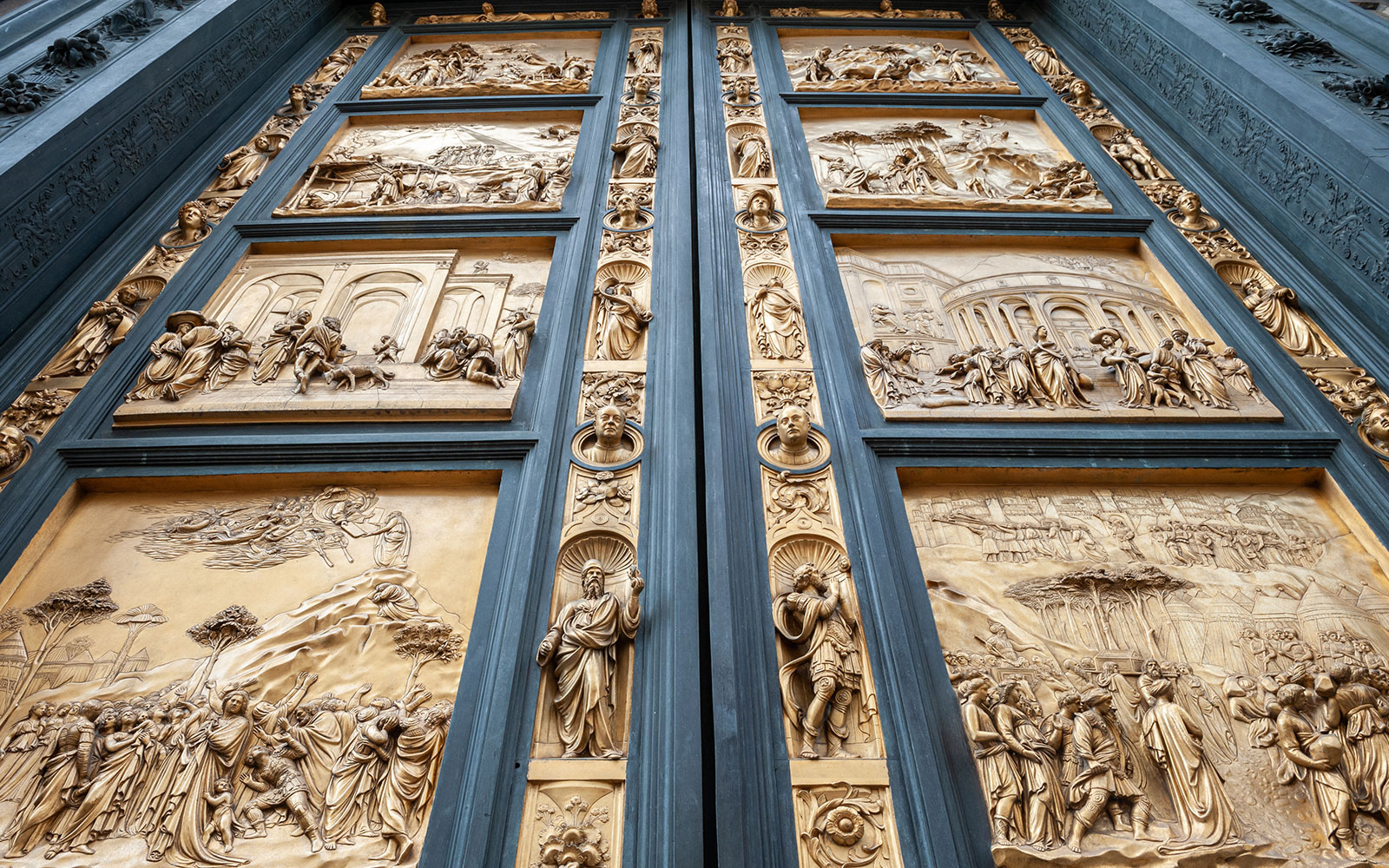
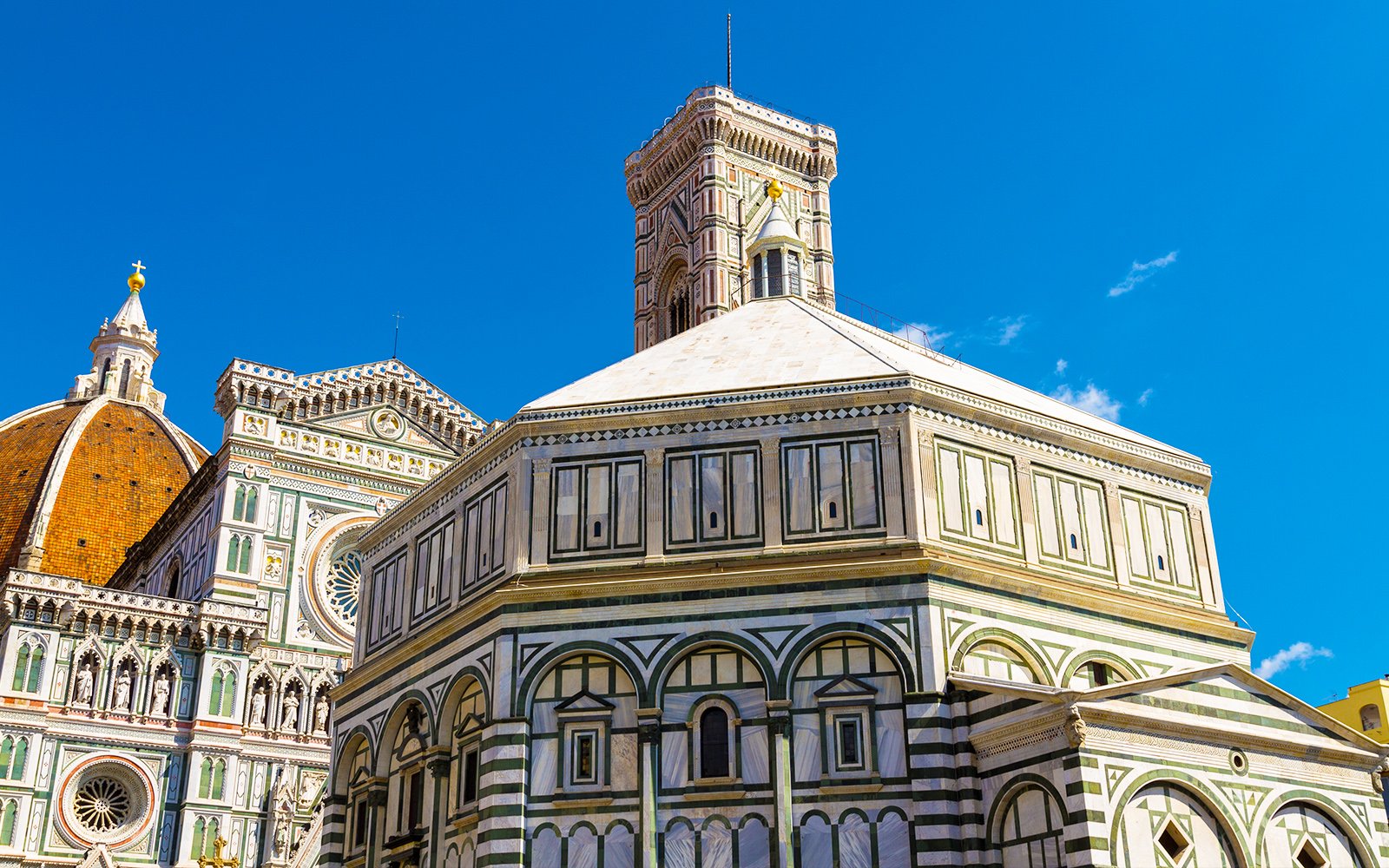
Visiting hours to the Florence Bapistery
🗓️Mon to Sun: 8:30am - 7:30pm
🗓️First Sun: 8:30am - 1:30pm
📷Must see: The Initiation Well
🕖Last-admission: 30 min before closing
❌Closed on: 1 Jan, Easter, 8 Sept,
Christmas Eve, & Christmas Day
Facts about Florence Baptistery
Construction started: 1059
Construction ended: 1128
Height: 45 m
Diameter: 25.6 m
Shape: Octagon
Materials used: Marble & stone
Florence Baptistery Doors
Western Door (Entrance)
The entrance to the Florence Baptistery is located on the west side. This entrance features an apse, which is a section of the building that extends outward. The apse is rectangular in shape and it features a small door through which you can enter the Florence Baptistery.
South Doors
The south doors of the Florence Baptistery were created by Andrea Pisano. Originally installed in 1336 on the east side facing the Duomo, they were moved to their current location in 1452. The design was likely inspired by the San Ranieri Gate of the Pisa Cathedral. Andrea Pisano crafted the wax model and completed the gilding, while Venetian masters handled the bronze casting, a process that took six years. The door consists of 28 quatrefoil panels. The top 20 panels depict scenes from the life of St. John the Baptist. The eight lower panels represent the virtues of hope, faith, charity (the three theological virtues), and humility, fortitude, temperance, justice, and prudence (the four cardinal virtues)
North Doors
The north doors of the Florence Baptistery were created as a votive offering to celebrate Florence's survival of scourges like the Black Death in 1348. Lorenzo Ghiberti took 21 years to complete these gilded bronze doors. They consist of 28 panels: 20 panels depict scenes from the life of Christ from the New Testament, while the eight lower panels show the four evangelists and the Church Fathers—Saint Ambrose, Saint Jerome, Saint Gregory, and Saint Augustine. The panels are framed by foliage designs, with gilded busts of prophets and sibyls at the intersections.
East doors (Gates of Paradise)
In 1424, Lorenzo Ghiberti received a commission for the east doors of the baptistery. Known as the "Gates of Paradise," these doors feature ten panels depicting scenes from the Old Testament. Each panel contains multiple episodes. For example, "The Story of Joseph" includes scenes such as Joseph being cast into the well by his brothers, sold to merchants, delivered to the Pharaoh, interpreting the Pharaoh's dream, receiving honor from the Pharaoh, Jacob sending his sons to Egypt, and Joseph recognizing his brothers and returning home. The panels are set in a richly decorated gilt framework adorned with foliage and fruit, numerous statuettes of prophets, and 24 busts. Among these busts, the two central ones are portraits of the artist, Lorenzo Ghiberti, and his father, Bartolomeo Ghiberti.
Top highlights inside Florence Baptistery
Tomb of Antipope John XXIII
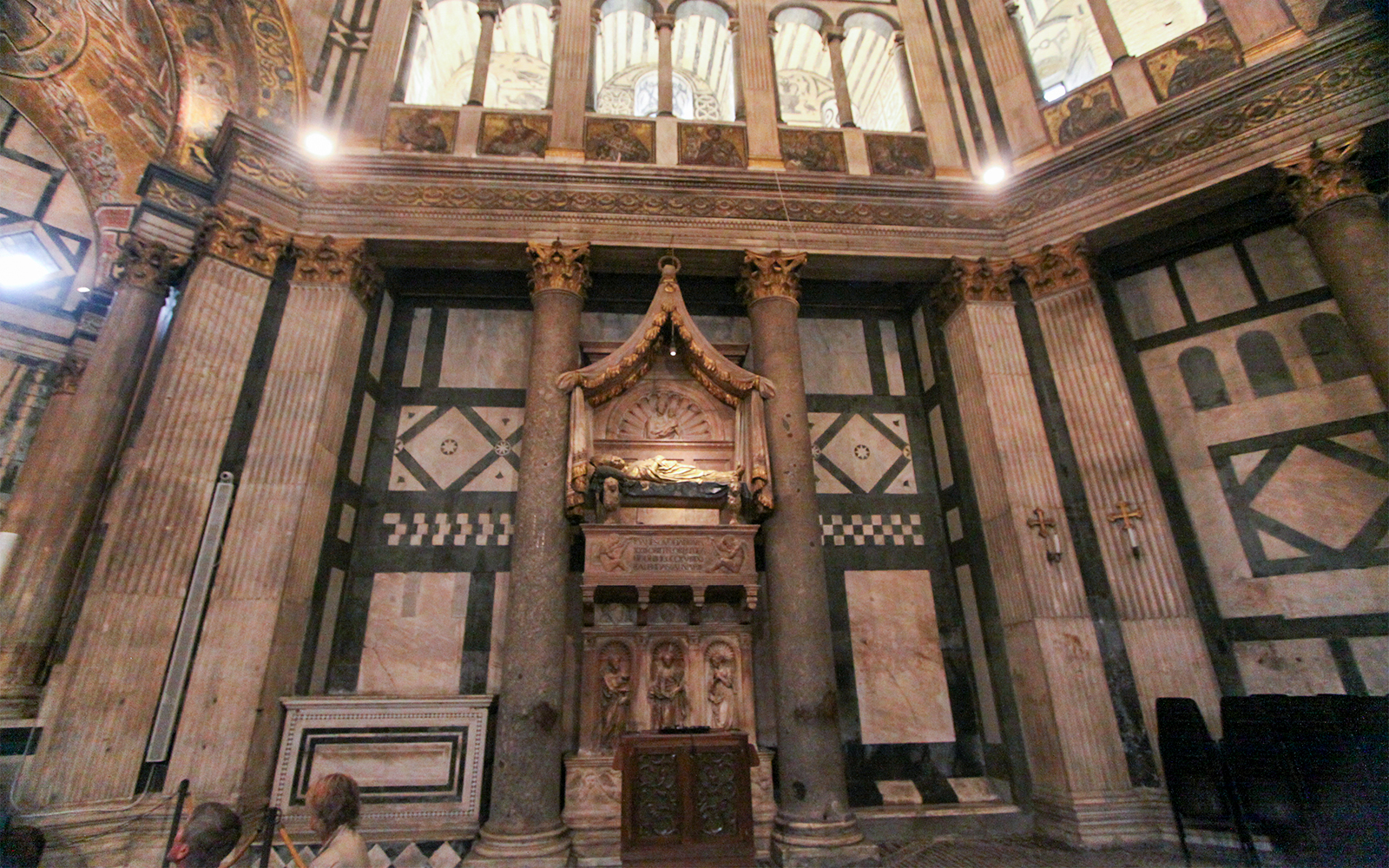
Inside the Baptistery, you'll find the monumental tomb of Antipope John XXIII, created by Donatello and Michelozzo Michelozzi. The tomb features a gilt statue with the face turned towards the viewer, reposing on a deathbed supported by two lions under a canopy of gilt drapery. John XXIII bequeathed several relics and his great wealth to this baptistery. This monument, with its baldachin, was a first in Renaissance art.
Design and Patterns
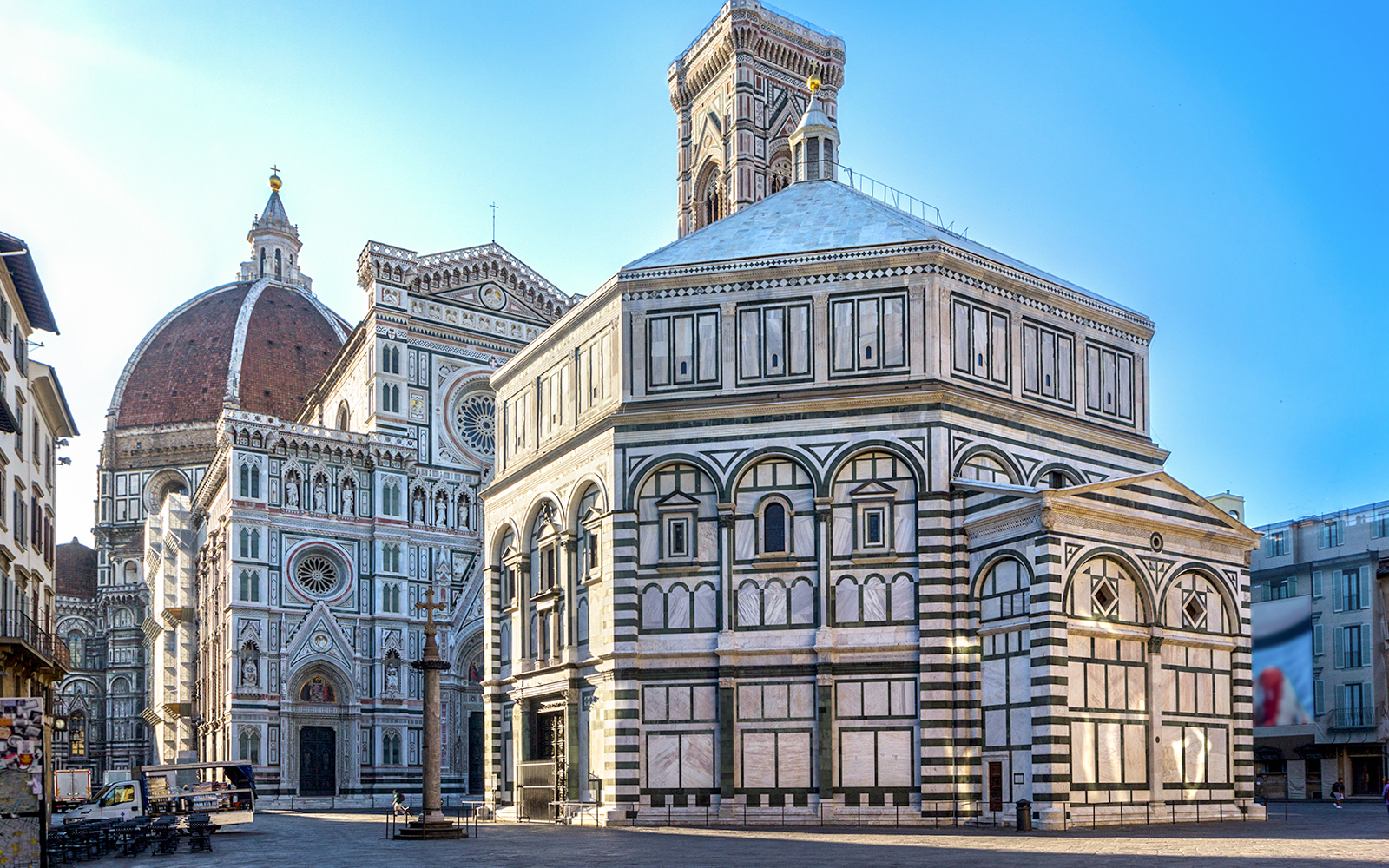
The interior of the Baptistery is divided into a lower part with columns and pilasters and an upper part with a walkway. The walls are adorned with dark green and white marble inlaid with geometric patterns. The niches are separated by monolithic columns of Sardinian granite. The marble revetment of the interior began in the second half of the eleventh century, reflecting the Florentines' commitment to lavish decoration.
Mosaic Ceiling
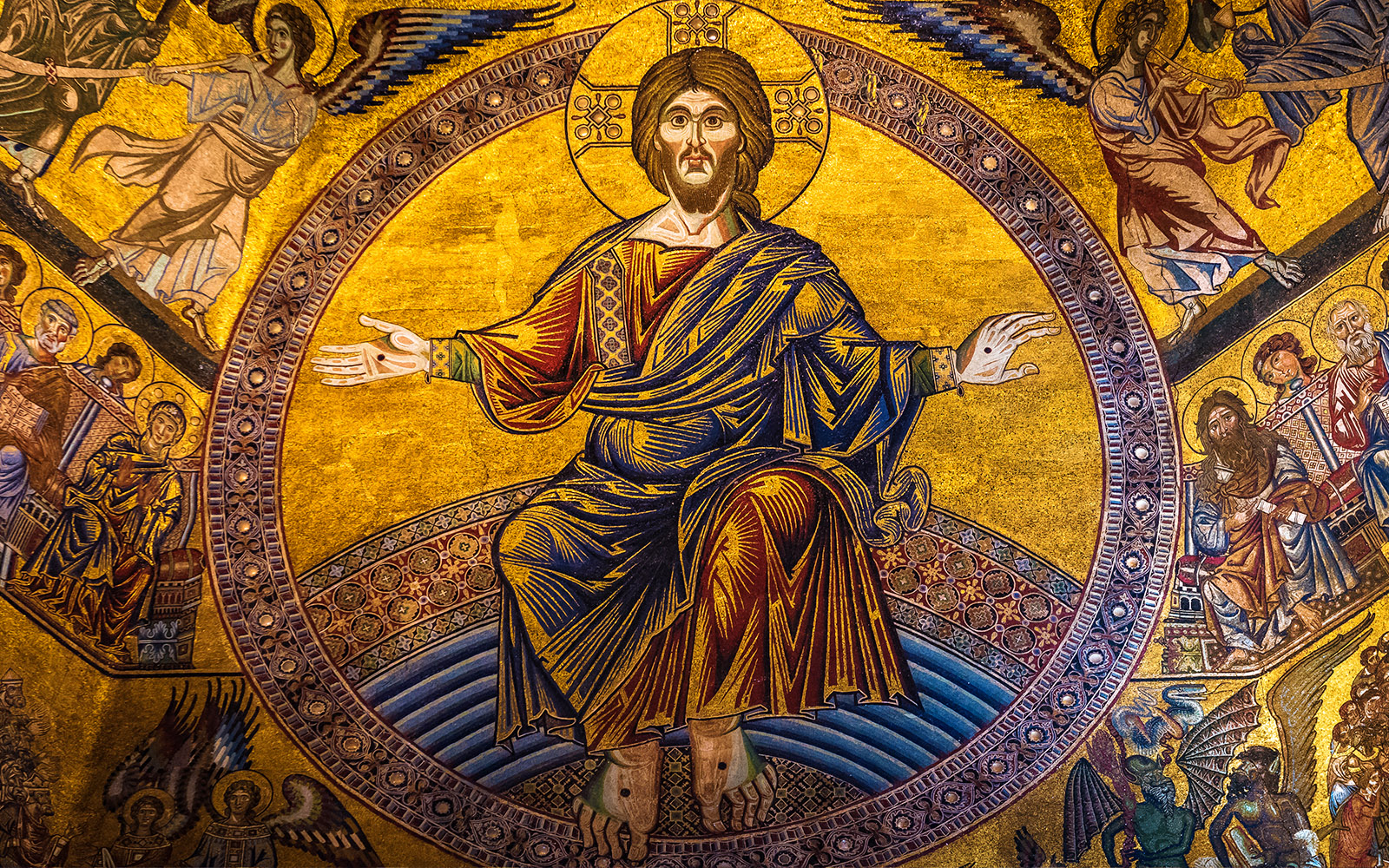
The Baptistery is crowned by a magnificent mosaic ceiling, created over a century in several phases. The oldest parts include the upper zone of the dome with the hierarchy of angels, the Last Judgment on the three western segments of the dome, and the mosaic above the rectangular chapel on the western side. An inscription in the mosaic above the western rectangular chapel indicates the start date of the work and the artist's name.


